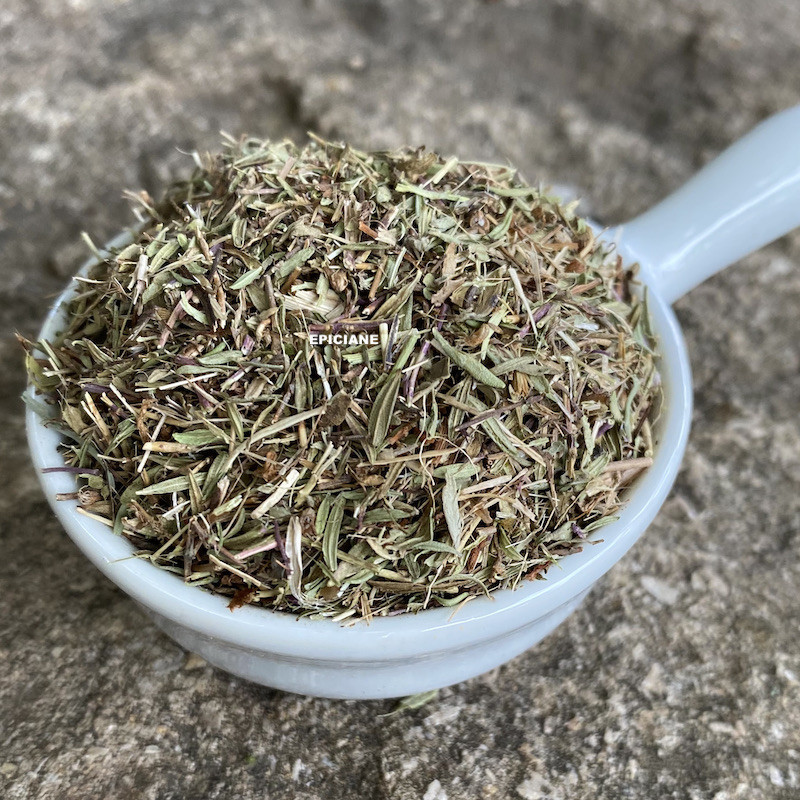
Reference: 050721


Its flavor is similar to thyme but milder.
It has multiple uses, from enhancing meats in cooking to offering numerous medicinal benefits.
 Delivery
Delivery
Mondial Relay
 Returns
Returns
See conditions
 Payments
Payments
100% secure
- Produit livré en sachet refermable -
°°°
Uses in Cooking and Beyond:
Wild thyme is primarily an aromatic shrub that has been used for centuries to flavor meat and vegetable dishes. Many know it as a classic pairing with rabbit, but it’s also excellent with other meats, stews, and marinades. With vegetables, it shines in dishes like ratatouille and sautéed veggie mixes.
It also aids in digesting beans, making it a traditional addition to bean dishes.
Its aroma is similar to thyme but milder.
Wild thyme has numerous benefits and can be used in various ways:
Who Am I?
Origin: Albania
Scientific Name: Thymus serpyllum
Despite its small size, wild thyme is a sub-shrub related to thyme. It grows up to 10 cm tall but can spread to form dense patches spanning several dozen centimeters. Its tiny leaves are accompanied by small blue flowers from June to September. Wild thyme thrives in sunny, dry areas with poor soil, up to an altitude of around 3000 meters. Its evergreen foliage withstands temperatures as low as -10°C. A highly nectar-rich plant during flowering, it attracts numerous insects, especially bees, and is also home to several butterfly caterpillars dependent on it.
A Little History:
Used for generations in both cooking and medicine, its name comes from a Latin word meaning "to creep," aptly describing its growth habit. There are nearly 300 species in the Thymus genus, including many decorative varieties.
Data sheet
Reference: 050721
Reference: 11N7866301
Reference: 11N7866301
Reference: angelique
Reference: 6K4878201
Reference: gentiane
Reference: 121320001
Reference: 3N7201902
Reference: PL-EK0-07
Reference: 408164502
Reference: 6N7456401
Reference: laurierE
Reference: 112930001
Reference: 9K5061101
Reference: 20731803
Reference: 9N7669901
Reference: 6L5609803
Reference: aubepinefl

Its flavor is similar to thyme but milder.
It has multiple uses, from enhancing meats in cooking to offering numerous medicinal benefits.